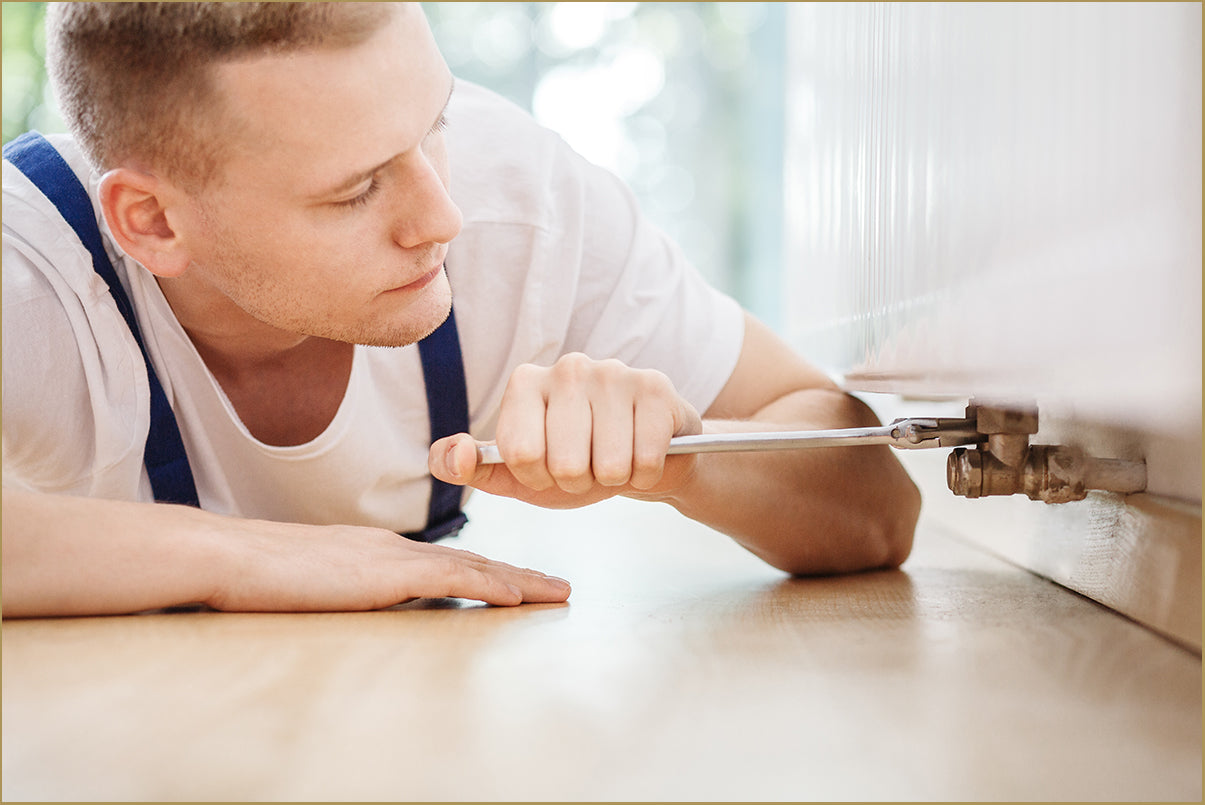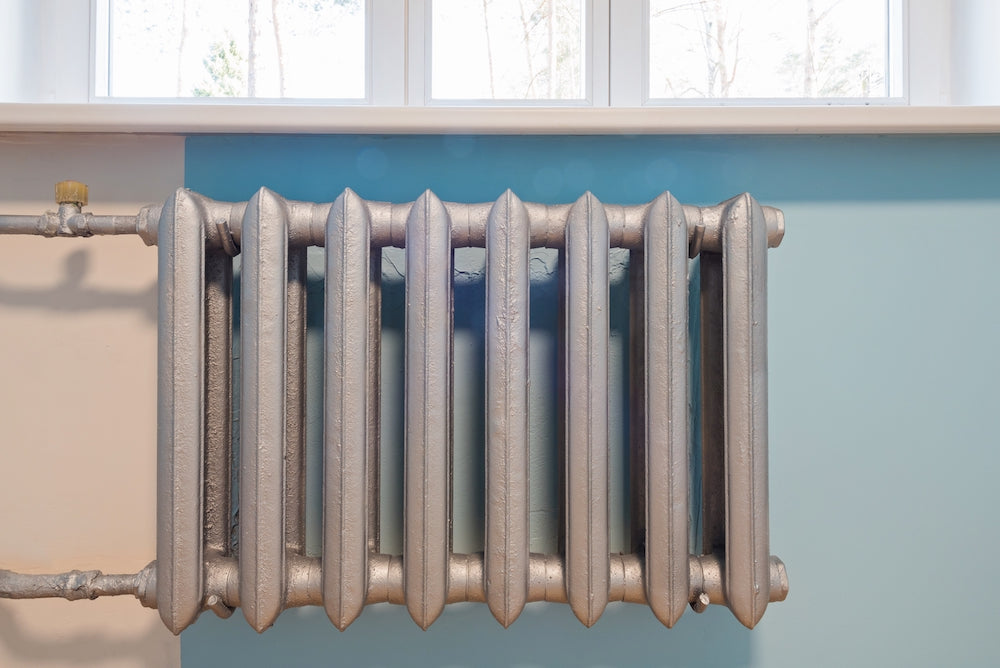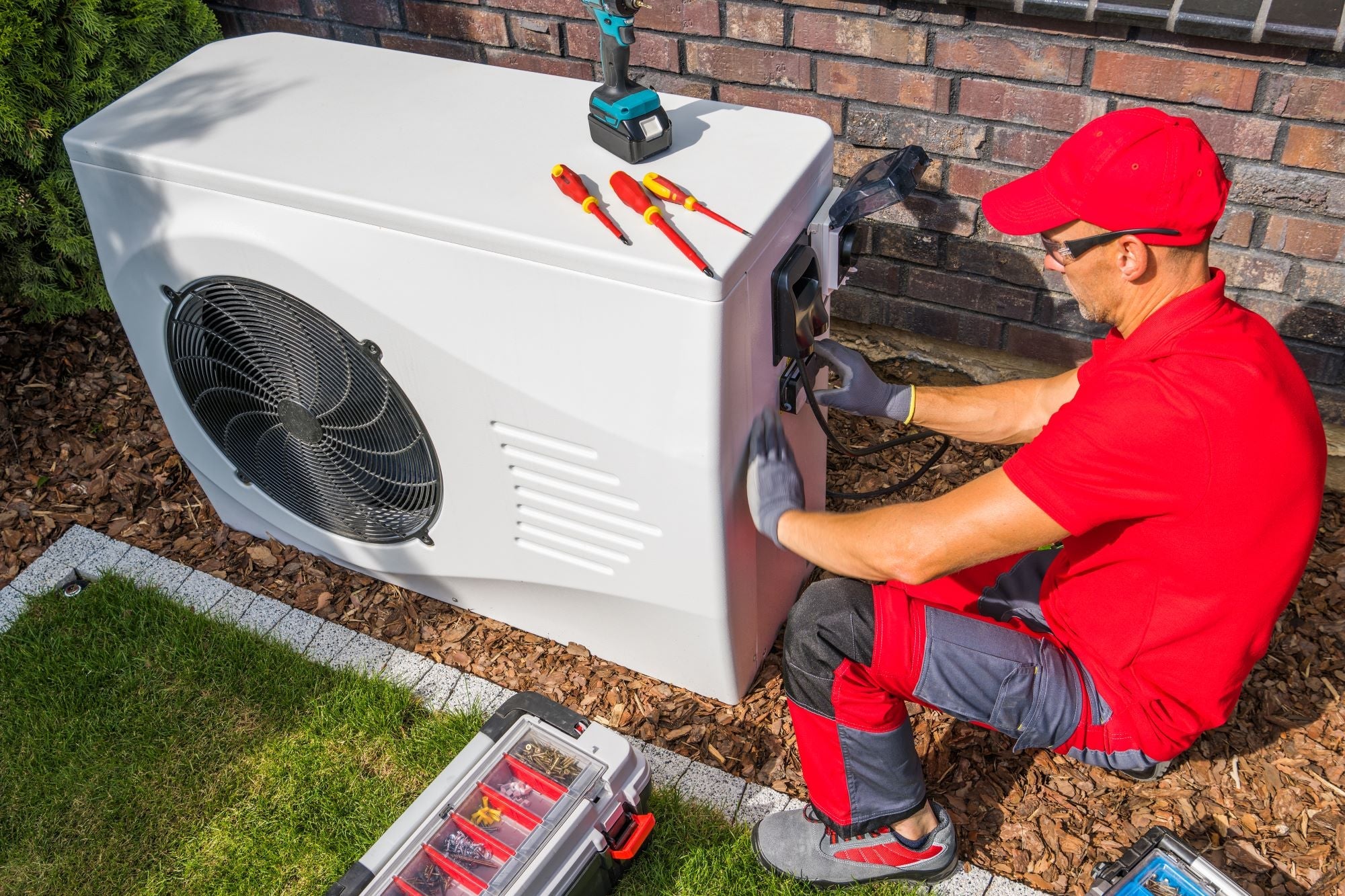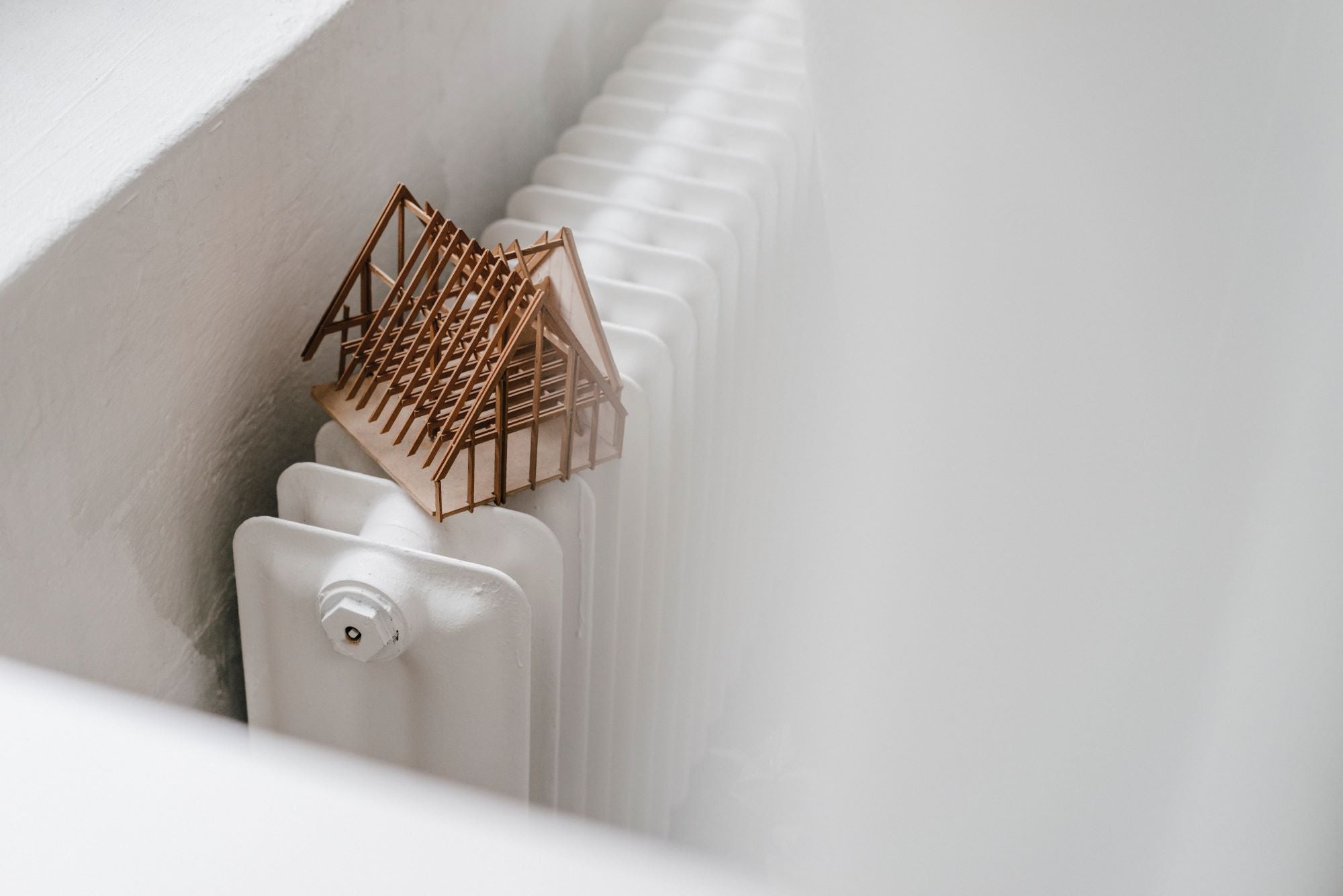
How to drain down a system
As with any other appliance in your home, your radiators sometimes need maintenance. Whether you’re changing the valves, upgrading the look of your home, or are redecorating multiple rooms in the house and need to get behind the radiators, dealing with water for each and every task can be an inconvenience, not to mention the potential flood risk! Instead, you may want to consider draining down the system so you can freely remove any valves and radiators you need at once. Learn how to drain down your radiator system safely and efficiently as well as how to refill it properly with this handy guide.What type of system do I have?
There are two types of systems to consider when it comes to draining down the system, pressurised systems (Closed Systems) and feed and expansion systems (Open System, F&E, Gravity Fed). In this blog, you can find two sets of instructions - one for each type of system.What is a feed and expansion heating system?

In this type of system, you’ll have an expansion tank in the loft and an airing cupboard -usually on the top floor of the property. If the water level in the system drops, a ball valve in the tank lowers, letting more water into the system. Depending on the age of the system, you may have motorised valves installed (represented by points 1 and 2 on the above image) which will probably be located near the boiler, with point 3 being a pump.
What is a pressurised heating system?
Pressurised heating systems are quite easy to spot because they feature a pressure gauge on or near the boiler. These systems are directly connected to the mains water supply but, unlike a gravity fed system, the mains water supply is turned off using a valve. Water is added to the system manually to reach the required pressure. There are generally two types of set-up for a pressurised system:Combi Boiler only
In this set up, hot water is delivered on demand without the need of a cylinder or any external motorised valves - making it a little less complex and easier to maintain.
Systems with a Hot Water Cylinder

The main difference between this type of set up and a combi boiler is that there is a hot water cylinder to take care of any hot water needs and a motorised valve to control where the hot water flows to.
What tools do you need to drain the central heating system
- Hose
- Jubilee Clip
- Old towels
- Small pot to catch water
- Radiator Bleed Key
- A kettle full of water (In case we need to shut off the mains water supply to the house, but still need a cup of tea).
How to drain a pressurised heating system
1. Turn off the heating system - there is almost always a switch somewhere near the boiler to do this. 2. Make sure the boiler and all of the radiators are cool before proceeding, but it's okay for the hot water cylinder to still be warm. 3. Once the system is cold, check the pressure gauge using the pressure dial near, or on the boiler and make a note of this number. 
4. Make sure the mains water-feed on the filling loop into the boiler and the associated valves are in the off position (they should already be like this). 
5. Make a note of the Thermostatic Radiator Valves (TRVs) current settings on all of the radiators and turn the TRVs to be fully open (usually the setting of 5 or max). Now that the pressurised system is ready to drain, it’s time to have that cup of tea and move ahead to the “Draining the central heating system” section below.
How to drain a feed and expansion heating system
1. Find the boiler controls, and make sure it is turned off so that the heating does not come on while you work. 2. Feed and expansion systems take in water from the mains which needs to be prevented during the draining process. There are 3 methods to prevent water from entering the system. In your airing cupboard, there should be a valve on a pipe leading from the loft, turn this off. 
Go up into your loft and to the expansion tank where you will find a ball valve - don't worry, you'll have most likely seen one of these in the back of your toilet before and they work in the same way - when the water is low, the ball is low and lets water in. When the water is high, the ball is high and the water flow stops. Use some string to secure the ball valve in an upward position, stopping the water flow.

Turn off the mains supply into the house. If you don’t know where your stopcock is (the valve used to shut off water to the house) it is usually in the kitchen under the sink.

When you start draining your radiators you will know your chosen method of turning off the system has worked by going into the loft, looking at the tank, and seeing if it is filling back up as the water drains out of the radiators - if it is, you’ll need to go through the above again.
Draining the central heating system
This part is the same regardless of the type of system you have: 1. Have a hunt about your house and find the lowest drain-off valve on the system - this could be near the boiler or on one of the radiators. 
2. Put a towel down under the drain-off valve. 3. Attach a hose to the drain-off valve and put a jubilee clip around it. Take the hose outside somewhere where the water can flow out. 4. Open the drain-off valve and water should start flowing out of the system. 
5. Go back to the boiler room. If there are any motorised valves in the cupboard they will have a manual switch, make note of their current position and then move them to the open position.
Vent the system
6. Next, start opening the vent and bleed valves. You want an old towel in hand to catch any water that might spray out as well as a radiator bleed key. Look to see if there is a vent high up in the boiler room and open this up. If water starts shooting out, close it and open it up again later when all the radiators higher up have been drained.

7. Go to the top floor of the house, locate the tallest radiator and open the bleed valve. This will allow air into the radiator and encourage the water to drain down. 


At first, the water will gush out of the drain pipe but once the water out the hose starts to slow, go to the second highest radiator and open that bleed valve. Wait for the water to slow again and move on to the next highest radiator. Repeat until all radiators on the top floor are done. Work your way down through the building, repeating this for all radiators and devices that have a bleed valve. If you open a bleed valve and water starts shooting out, the are two possible reasons: a. You have done this too early and radiators higher up still have water in them. b. The radiator is on a different circuit than the drain-off valve that your hose is attached to, so you may need to find another drain-off valve in the house for this circuit or empty this radiator individually. Some radiators may have their own circuit, or be on a separate circuit, so be careful when removing them.
Carry out your work
Once you have successfully drained the system and the hose attached to the drainpipe has stopped flowing, you are ready to start carrying out the required work, but it is a good idea to leave the hose attached for the time being. Before doing any work, it is important to understand what you have emptied and what still has water in. If the work you are doing is on the radiators or valves, then you should be fine to carry on, but always be prepared for spills and drips, with old towels and buckets to hand before trying to remove anything from the system. If your work is to do with the hot water cylinder, it's important to note that this has not been drained. So, you will need to isolate that separately by turning off the mains water feed into the tank, then drain it out. When your work is done, you can refill the system. How you refill the system changes depending on the type of system.How to refill a pressurised heating system
1. Return to the drain-off valves and close them. 2. Go around all the radiators and close the bleed valves, this is very important, as if you refill the system while these are open, then water will come out of every bleed valve on every radiator. 3. Put the TRVs back to their original position. 4. If you opened a vent in the boiler room or anywhere else, close this. 5. You now need to open the mains water valve(s) on the filling loop to allow water into the system, watching the pressure gauge as the system fills back up. 6. Fill the system to the pressure it was at before draining, then shut off the mains. It should never be above 1 bar while the system is cold. 7. While this is happening, it is good to check the work you have done to make sure there are no leaks. 8. Vent the valves in the airing cupboard and near the boiler. 9. Refill the system to what it was at before draining. (Everytime you vent or bleed a value, you need to refill the system again) 10. Then go to a downstairs radiator and bleed it until no more air comes out. 11. Return to the boiler and refill the system to the required pressure level. 12. Repeat this for all downstairs radiators, then upstairs radiators. Once complete, make sure to turn off the mains water valves on the filling loop connecting to the system and that the motorised valves are back into their normal positions.How to refill a feed and expansion heating system
For a feed and expansion system, you want to leave the drain-off valve open with the hose connected for a bit and let water run through the system. 1. Go around all the radiators and close the bleed valves, this is very important, as if you refill the system while these are open, then water will come out of every bleed valve on every radiator. 2. Put the TRVs back to their original position. 3. If you opened a vent in the boiler room or anywhere else, close this. 4. You need to allow the mains water to flow back through the system if you:-
- turned off the valve in the airing cupboard that led to your loft, turn this back on.
- tied up the ball valve in your loft expansion tank, you'll need to untie this.
- turned off the mains supply using the stopcock tap, turn this back on.










